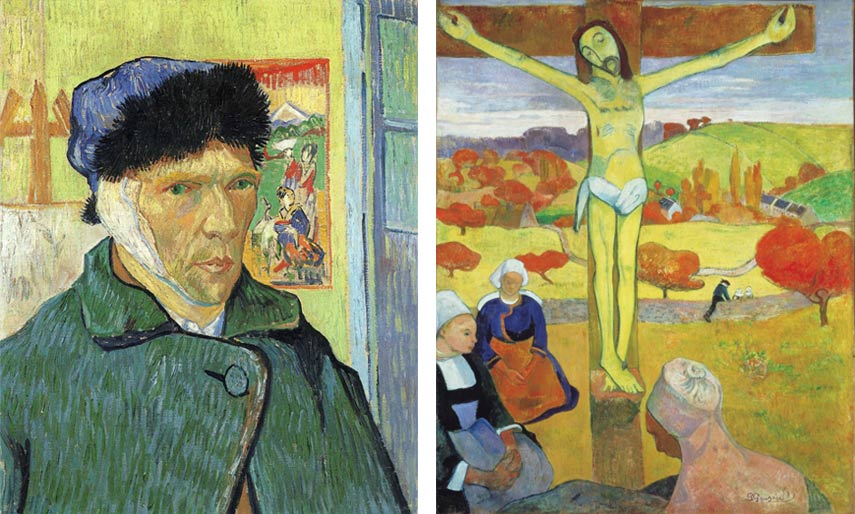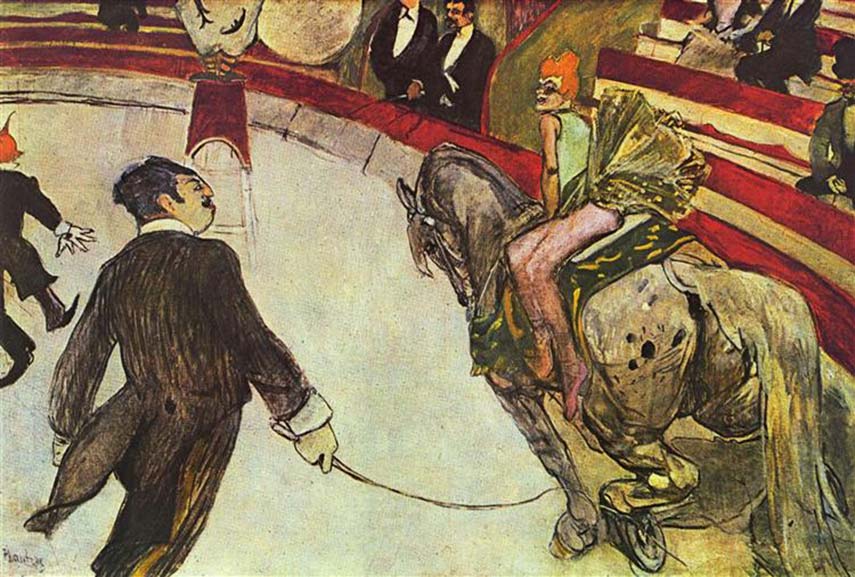Art Style That Is Based on Post Impressionism but More Abstract
Post-impressionism fine art movement, like the Impressionism, is considered to be i of the earliest avant-garde movements of the 19th century. The concerns of the major and most influential painters and sculptures that helped to create the impressionism mode produced the works that focused on the investigation of the perception of the center, the presentation of the shifting nature of light, and the depictions of the everyday life in the streets, parks, cafés, and confined. Only, what is Post-Impressionism? Following from the predecessors of the Impressionism move, Post-Impressionism was the adjacent generation of the advanced artists that took a multifariousness of different approaches, but what glued them together was their rejection of the focus on the opticality of the Impressionism movement. Emerging as a reaction confronting the Impressionists' concern for the naturalistic depiction of light and colour, Post-impressionists fought to bring back the focus on the subject thing and the construction in paintings that they felt was lost. Dominated by the immense personalities, such as Paul Gauguin, Paul Cézanne, Georges Seurat, Vincent van Gogh, and Henri de Toulouse-Lautrec, the Post-impressionists took unlike approaches and continued building on the advances of the previous art movement.

The Elements of Post-Impressionism Art
Breaking away from the naturalism of Impressionism and focusing their art upon the subjective vision of the artists, rather than post-obit the traditional role of the art equally a window onto the world, artists of the Post-Impressionism movement focused on the emotional, structural, symbolic, and spiritual elements that they felt was defective from Impressionism. The 'depiction of the passing moment' of impressionism paintings, such every bit the painting series of Claude Monet, for the emerging new authors, created the paintings that lacked structure. Attempting to attack this outcome, the Post-Impressionism art movement seems to exist divided into two major streams of thought.
Similarly to the previous division of the Neo-Classical and Romantic art, the division of Postal service-Impressionism move too existed onto a more than structural, formal, nearly scientific blueprint fashion of artist Georges Seurat with his dot theory, later known as pointillism and Paul Cézanne, who concentrated his practice on the enquiry of the color planes, while on the other, the fine art of French painter Gauguin, van Gogh, and Toulouse-Lautrec emphasized the expression of emotions and sensations through light and color. Out of these two trends of Postal service-Impressionism art, emerged the extremes of the individual styles of the 20th-century fine art, ranging from Cubism to Surrealism.

The Unlike Approaches, Concepts, and Styles
The earliest indication of the new tendency that bankrupt with Impressionism was the painting style of Georges Seurat. He developed a manner of painting known as Pointillism, which refers to the use of a point or dot as the basis for the construction of a painting. His method of painting, scientifically idea after, following a rigorous pattern design and employing even one of the oldest compositional tools, the golden section, kept the bright and unmixed color scheme of the Impressionism paintings and open up-air themes simply added a design based on geometrical shapes. The perfectly balanced compositions of Seurat'due south paintings differ immensely from the vibrant and screaming paintings of Vincent van Gogh. Attempting to limited the deepest emotions, and the expressions of his tormented soul, van Gogh's paintings relied upon the saturated colors and broad brushstrokes to evoke the inner turmoil of the artist. Both van Gogh and Paul Gauguin rejected the ' beastly mistake of naturalism' in favor of a more personal, spiritual expression.
" I dream of painting and then I paint my dream." - Vincent van Gogh
Van Gogh and Gauguin shared an interest in symbolic content and produced images that were subtracted from their natural appearances, where the artist's feelings most the subject matter, and his views on the artful consideration of color, line, and course, were the most crucial elements for the creation of their paintings. Van Gogh was also influenced by a variety of sources, and his love of the stylized representations of Japanese woodblock prints was also evident in the work of Henri de Toulouse-Lautrec, whose unique depictions of the Parisian nightlife resulted in paintings and lithographs that were built with the strong outlines and flat planes of color of the Japanese woodblocks.
Check out more works by Gauguin on our market place!

What We Owe to Postal service-Impressionism
Well-nigh consider the investigation of the pictorial form and the exploration of the underlying formal structure of the subject area matter depicted, that formed the practice of Paul Cézanne, as the nigh of import and influential heritage that followed from the movement. His ideas that the simplest geometrical shapes form the underlying structure of any discipline matter glued Mail-Impressionism and Cubism, and were immensely important for the influential artists of modernity, such every bit Henri Matisse and Pablo Picasso, who even went so far as to call Cézanne " the father of u.s.a. all". This link was not the only i since the aesthetic touch on of the motility influenced too Expressionism and Fauvism as well. Some would even go far to say that the gimmicky movements that are identity-based, such equally Feminism art, could be linked also due to the major business concern of the artists on their own personal styles and individualism, where the paintings were seen to correspond a window into the creative person's mind and soul.
The early on focus on abstract patterns, geometrical shapes, and structure on 1 side influenced the birth of Cubism and Abstruse fine art and the importance of the individual, helped to shape the Expressionism and even the Abstruse Expressionism works. Currently, in the broad spectrum of works that create the contemporary art, the heritage of the Post-Impressionism is non something that could be dismissed. The major trends today, still experiment with color, form, pictorial planes, and we are witnesses to the rising of geometrical abstract works. The demand for experimentation and the re-definition of everything stands at the base of gimmicky fine art today and stood at the base of the Post-Impressionism art as well.

Editors' Tip: The Post-Impressionists
Focusing on the history and the major developments of the Mail-Impressionism movement, the book is an fantabulous guide into the globe of the major art figures and the major works produced. The book is an introduction to the Post-Impressionism of the 1880s and 1890s and it explores the motion through the investigation of the major exhibitions, themes, theories and information technology even focuses on the private characters of the major figures.
All images used for illustrative purposes only. Featured images in slider: Georges Seurat – A Dominicus on La Grande Jatte. Captions, via Creative Commons; Vincent van Gogh – Starry Dark Over the Rhone. Captions, via Artistic Eatables; Paul Cézanne - Rideau Cruchon et Compotier, detail. Image via mostfamousartwork.blogspot.com; Henri de Toulouse-Lautrec – In Bed The Osculation, item. Paradigm via totallyhistory.com
bottomleyfultarly75.blogspot.com
Source: https://www.widewalls.ch/magazine/what-is-post-impressionism
0 Response to "Art Style That Is Based on Post Impressionism but More Abstract"
Enviar um comentário